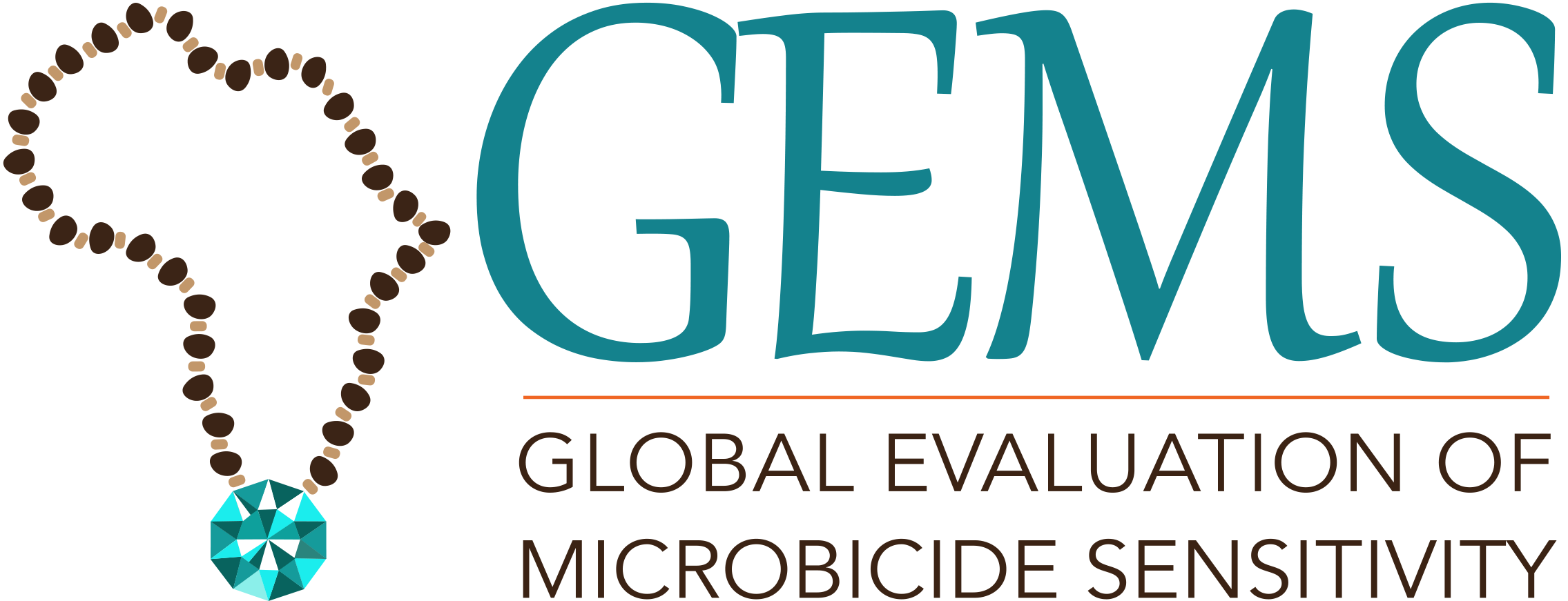GEMS informs policies and defines programmatic considerations related to use of ARV-based HIV prevention products and risk of resistance.
- Genital swabs testing begins and assay development is underway.
- Oral PrEP modeling completed.
- Collaboration in Kenya continues.
- Resources being developed for training and M&E.
Genital swabs testing begins and assay development is underway. In collaboration with Partners PrEP and the Microbicide Trials Network (MTN), the GEMS laboratory team is testing vaginal swabs from seroconverters to determine if drug resistance occurred in the genital tract (rather than the plasma) of women who seroconverted on active TDF/FTC product. Assay development for resistance testing in swabs is in progress, and GEMS has been evaluating methods to optimize the amount of HIV RNA obtained from a dried blood spot (DBS) sample. The lab team has been modifying standard HIV genotyping protocols for DBS to simplify the procedure while also working on adapting next-generation sequencing protocols to increase throughput and lower testing cost. The lab is evaluating universal primers applicable for all HIV-1 subtypes.
Oral PrEP modeling completed. GEMS is modeling the cost effectiveness of different HIV-testing approaches for people starting and continuing on oral PrEP, as well as on potential use of resistance testing in people who have become infected despite being on oral PrEP. The modeling team has completed model calibration to KwaZulu-Natal and has produced preliminary draft output results.
Collaboration in Kenya continues. The GEMS team is working closely with Kenyan partners including NASCOP, Jhpiego, and POWER to establish mechanisms to monitor for HIV drug resistance during oral PrEP rollout. The GEMS team recently attended the National PrEP Launch in Nairobi and met with in-country partners to coordinate logistics and procedures for HIV drug resistance testing on samples from seroconverters during PrEP rollout. The GEMS team is working to establish similar relationships in South Africa, Zimbabwe, and Namibia by engaging ministries of health and large-scale oral PrEP projects.
Resources being developed for training and M&E. GEMS is developing training materials for healthcare workers that include dried blood spot collection techniques and resistance test interpretation. Additional materials, such as job aids and fact sheets, are being developed to support healthcare workers and policy makers in countries preparing for drug resistance monitoring. Additionally, a resistance monitoring M&E framework and suggested indicators were developed for discussion at the WHO PrEP M&E and NASCOP M&E subcommittee meetings in April 2017.
No Responses
Leave a Reply

